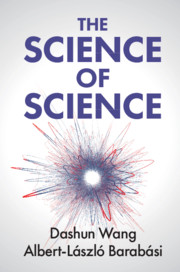Book contents
- The Science of Science
- The Science of Science
- Copyright page
- Dedication
- Contents
- Acknowledgements
- Introduction
- Part I The Science of Career
- 1 Productivity of a Scientist
- 2 The h-Index
- 3 The Matthew Effect
- 4 Age and Scientific Achievement
- 5 Random Impact Rule
- 6 The Q-Factor
- 7 Hot Streaks
- Part II The Science of Collaboration
- Part III The Science of Impact
- Part IV Outlook
- Book part
- References
- Index
5 - Random Impact Rule
from Part I - The Science of Career
Published online by Cambridge University Press: 07 February 2021
- The Science of Science
- The Science of Science
- Copyright page
- Dedication
- Contents
- Acknowledgements
- Introduction
- Part I The Science of Career
- 1 Productivity of a Scientist
- 2 The h-Index
- 3 The Matthew Effect
- 4 Age and Scientific Achievement
- 5 Random Impact Rule
- 6 The Q-Factor
- 7 Hot Streaks
- Part II The Science of Collaboration
- Part III The Science of Impact
- Part IV Outlook
- Book part
- References
- Index
Summary
While there is plenty of information available about the luminaries of science, here we discuss the relative lack of information about ordinary researchers. Luckily, because of recent advances in name disambiguation, the career histories of everyday scientists can now be analyzed, changing the way we think about scientific creativity entirely. We describe how the process of shuffling a career – moving the works a scientist publishes around randomly in time – helped us discover what we call the “random impact rule,” which dictates that, when we adjust for productivity, the highest impact work in a career can occur at any time. We also see that the probability of landmark work follows a cumulative distribution, meaning that the random impact rule holds true not just for the highest impact work in any career but also for other important works, too. While there is precedent for this rule in the literature – Simonton proposed the “constant probability of success” model in the 1970s – until recently we didn’t have the data on hand to test it. The random impact rule allows us to decouple age and creativity, instead linking periods of high productivity to creative breakthroughs.
Keywords
- Type
- Chapter
- Information
- The Science of Science , pp. 51 - 59Publisher: Cambridge University PressPrint publication year: 2021



